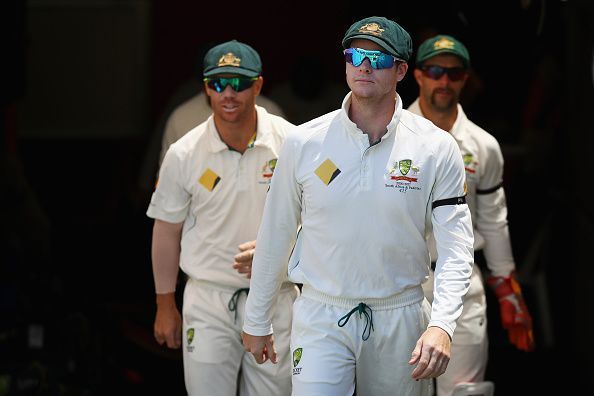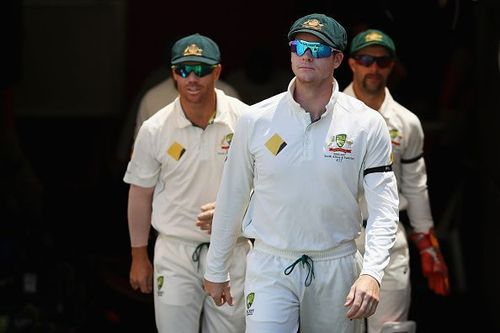
Creating the right culture: Role of a few good men in a team

As New Zealand stumbled and sailed through in the semi-final of the World Cup 2015, the contest was remembered for two things: Breathtaking performance and the sportsmanship offered by the players.
On 24th March 2015, New Zealand and South Africa were engaged in a thrilling match with some breathtaking performances, specifically by Grant Elliott, Corey Anderson, and David Miller. Second, the sportsmanship moment came when a victorious Grant Elliot lifted a vanquished Steyn up. Fittingly, both the teams had played with great honor and compassion despite the high stakes and emotions.
On the same day, three years later, Australia were playing against South Africa, and the converse happened; Smith and Warner were found guilty of infringing the code of conduct. Inevitably, they were reprimanded for a year from Cricket Australia. Losing two of the contemporary greats for a year was undoubtedly shameful, and a vacuum, which only Smith and Warner could fill.
Incidents like the one in Cape Town are not new to Cricket; the game has strayed quite a lot from the gentleman's game of yesteryears. The Bangladeshis’ Nagin dance, Shakib Al Hassan furiously calling his batsman back to the pavilion after an unsatisfactory umpires' decision, Warner's verbal banter with Quinton de Kock are a few examples of the recent past.
Post the ball tampering fiasco, Mickey Arthur; the former Australian coach said "Unfortunately, it was always going to end like this. Despite the generational change, independent reviews and too many behavioral spitfires to list, Cricket Australia and the national team had demonstrated no real willingness or desire to improve the culture within their organization from season to season".
In a cricket team, 15 to 20 diverse individuals with varied ways of approaching the game come together with a joint mission of winning. Arguably, all such individuals play the game for the love of it and, for the pride in winning for his team/country.
Like with most things about a successful sportsman’s life, the priorities need to be clear when these twenty diverse individuals make it to the team. With Individuals committed to their work and being selfless enough to embrace the culture, morality and work-ethic could well be part of the cultural environment, which the team could needlessly pick from the role models within the squad.
For India, such high-value period of performance backed with a team-ethic and morality reached its peak when the likes of Rahul Dravid, Anil Kumble, V V S Laxman, Javagal Srinath, Sachin Tendulkar and an ever unassuming John Wright were at the helm. The stalwarts of the game were not beholden to Indian Cricket; instead, they married Indian Cricket. Playing the game for a win and also accepting defeat with grace. Consequently, the juniors picked the experiences from the role models.
Recently, Kane Williamson, captain of the Black Caps said "McCullum set an environment and culture. It was about how they want to play the game. To play as hard as in the park, and at the end of the day, the game finishes, and you are still people".
The tiny country from Down Under with five ICC "Spirit of Cricket" awards deserves to be in the top two if measured by the Cricketing equivalent of Human Development Index. The Cricket fraternity has always respected the dignity and righteousness of the players like Daniel Vettori, Stephen Fleming, and Brendon McCullum.
That smile on Kumar Sangakkara's’ face after losing the finals of World Cup-2011 was an endearing moment to savor. The legends of Sri Lankan Cricket, Kumar Sangakkara, and Mahela Jayawardene were an embodiment of right attitude and work-ethic. The gentlemen from the Island nation played in a manner in which we would love for it to be played even in this fiercely competitive era. Sri Lankan Cricket or in fact, World Cricket needs such players to rekindle the spirit of the game.
Unlike the examples mentioned earlier, there is an apparent lack of role models in today's cricketing world; there is an urgent need for a few of them in their respective teams, it can be a perfect coach too. Role models can ensure that the right culture is prevailing in the group. The leadership team along with the few role models should understand the young men who play the game, guide them in the right way, and caution them of the shenanigans that may take place off the playing arena. The leadership team should also understand the board that runs the show, the curious media and the followers of the game who passionately follow the game.